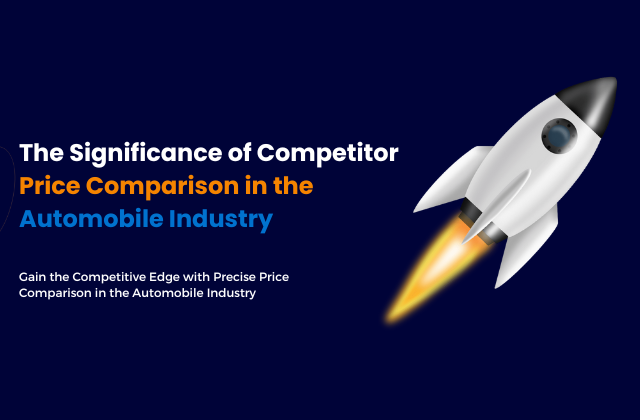Understanding the Significance of Competitor Price Comparison
The competitive landscape of the automobile industry is continually evolving. One significant factor at the center of this evolution is the competitor price comparison. This comparison is a vital cog in the ever-spinning wheel of market strategy, aiding in the formulation of crucial pricing policies for automobile parts and vehicles. By assessing what competitors are charging for similar products, businesses can develop an effective pricing strategy that balances profitability and customer attractiveness.
Competitor price comparison software allows businesses to position themselves optimally within the market, considering the unique factors that govern their operations. It serves as a compass, guiding businesses towards the delicate balance of competitive pricing and profitability, helping to secure a sturdy foothold in the volatile automobile market.
How Price Comparison Drives Competitive Advantage in the Automobile Industry
In the dog-eat-dog world of the automobile industry, gaining an edge can be a herculean task. Here’s where price comparison steps into the spotlight. By obtaining a comprehensive understanding of the competitor’s pricing methods, businesses can carve out a distinct competitive advantage. It allows them to formulate pricing strategies that resonate with their target audience while ensuring business profitability.
For instance, if a business learns that its competitors are selling auto parts at significantly higher prices, it could seize this opportunity by offering the same parts at slightly lower prices. Not only does this strategy draw more customers, but it also reinforces the business’s position in the market, fostering customer loyalty and boosting overall sales.
The Role of Data Analysis in Effective Price Comparison
Data analysis is a key player in the competitive price comparison arena. By using advanced data analysis techniques, businesses can dig deep into a trove of pricing data, dissecting and analyzing it to extract valuable insights. This information can, in turn, be used to shape effective pricing strategies that are both profitable and attractive to customers.
Data analysis plays a vital role in tracking the frequent fluctuations in the market, enabling businesses to respond swiftly and appropriately. It provides a clear perspective on the competition’s pricing strategies, facilitating more informed decisions and effective strategy formulation.
Key Metrics and Indicators for Successful Auto Parts Price Comparisons
Several key metrics and indicators contribute to successful auto parts price comparisons. These include the price deviation index, which indicates how a business’s prices differ from the competition. A low-price deviation index suggests competitive pricing, while a high index may point to potential opportunities for adjustment.
Another critical metric is the price index, which shows the ratio of a business’s average price to that of its competitors. A price index greater than 1 signifies higher prices, while a value less than 1 indicates lower prices. Monitoring these indices can help businesses keep their pricing strategies on track, aligning them with the market dynamics and customer expectations.
Overcoming Challenges in Competitor Price Comparison and Implementation Strategies
Despite its benefits, competitor price comparison isn’t without its challenges. High data volumes, frequent price fluctuations, and varying competitor strategies can all pose hurdles. However, with the right tools and strategies, these obstacles can be navigated.
Automated price tracking solutions offer a way to handle high data volumes and price fluctuations. By automating the data collection process, businesses can get real-time access to competitor pricing data, thereby enabling them to respond swiftly to changes. Furthermore, employing a dynamic pricing strategy, wherein prices are adjusted based on market changes, can help businesses stay competitive, even amidst frequent price fluctuations.
Competitor price comparison is an indispensable tool in the automobile industry. With a robust understanding of its significance, the advantages it offers, the role of data analysis, key metrics for success, and strategies to overcome challenges, businesses can use this tool to their advantage, cementing their position in the competitive automobile market.
Also Read:




